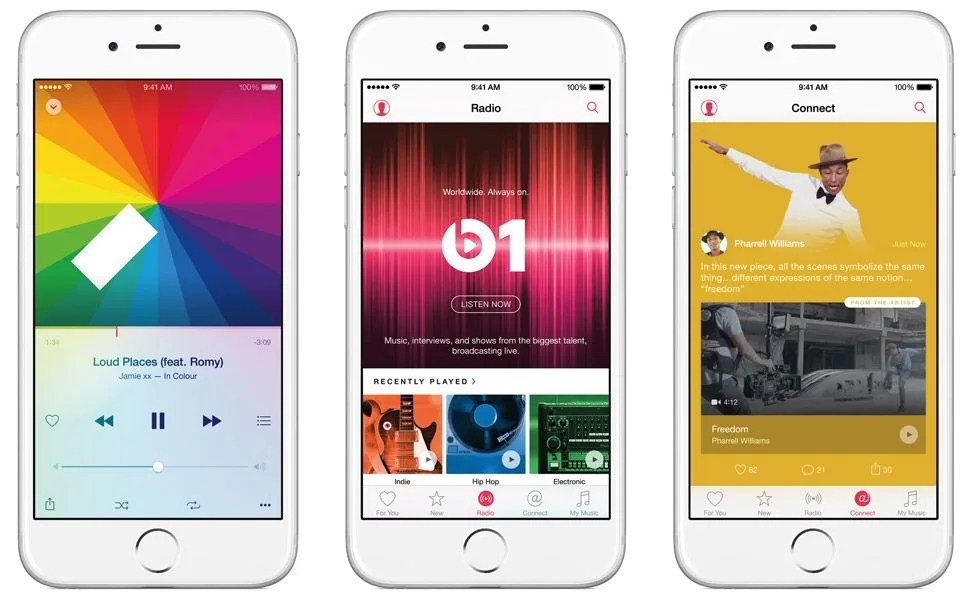Twelve years after the launch of iTunes, Apple’s plans for a new music service, a.k.a Apple Music, are finally out in the open. And it’s not the mind-blowing improvement to an existing category that most have come to expect from the company. Where the iPod, iPhone and iCloud were game-changers, here Apple is playing by their competition’s rules. At least for now.
Like Spotify, Google Play Music and a few other services out there, Apple Music is priced at $9.99 a month for unlimited streaming access to a catalog of 30 million songs. Early looks at the app show that it offers the same basic functionality you’d expect in a dedicated music app these days. There’s space for your library and playlists, a promotional area for new content and what’s trending in the wide world of music, and a tab that recommends tracks based on your preferences.
But there are a few features that distinguish the service, which you’re sure to learn about in the coming months now that Cupertino’s marketing machine is humming. Though for the moment they seem to offer more spark than substance.
For the moment Apple Music seems to offer more spark than substance.
The launch of Beats 1 radio is certainly interesting on paper: a live, classic-style radio station broadcast around the clock to 100 different countries by three respected DJs out of New York City, L.A. and London. That we can get a read on music from around the world is part and parcel of the utopian dream of the Internet. According to Jimmy Iovine, co-founder of Beats by Dre, it also represents the service’s focus on new music suggestions curated by humans rather than algorithms — the same marketing angle used to promote the now dead Beats Music service, which Apple acquired as part of its $3 billion purchase of Beats Electronics last August. But with the music industry fracturing into smaller and smaller niches over the past decade or so, the idea of one station being everything for every Apple product owner (and Android and Windows user) is daunting, to say the least.
Artist Connect — a mini social network of sorts that lets artists share videos, pictures, and audio clips from finished and unfinished releases with fans — isn’t particularly promising, as much as Drake may want to convince you otherwise. Especially when you consider Apple already tried the artist profile game with Apple Ping back in 2010, which was a total flop. With social media (very) slowly settling into a groove — Facebook as a publishing platform, Twitter as the largest ongoing water cooler conversation on earth, Instagram and Tumblr as content creation playgrounds, and Snapchat encompassing all of the above — it’s hard to imagine the feature being anything more than a shinier “about” page, since yet another voice would hardly fit.
If you’re committed to the Apple ecosystem, more advances like this could promise the smoothest listening experience in the industry.
